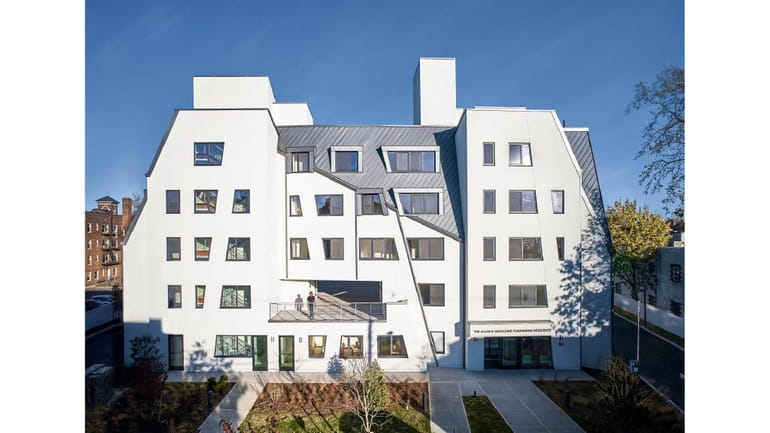LI takes small steps forward on housing

Freeport recently welcomed a new housing development offering 45 affordable apartments for adults ages 55 and older. Credit: Office of Gov. Kathy Hochul
In tackling Long Island's housing crisis, every little bit helps.
But when there's constant resistance and pushback, it takes many "little bits" to move forward.
Just in the last few weeks, Long Islanders heard about plans for new housing in Centerport, Sag Harbor, Sea Cliff and Sayville. They saw ground broken on hundreds of new apartments in West Hempstead. And they celebrated the completion of 45 affordable units for those 55 and older in Freeport, a building that's already open and fully occupied.
None of it has been or will be easy; when it comes to housing, nothing on Long Island ever is.
The West Hempstead development, for instance, ultimately succeeded in part because residents wanted something better than the previously derelict site, but it still took years of meetings, community input and approvals. The Freeport building, which Gov. Kathy Hochul highlighted this week, also sits on once-vacant land, and the senior housing focus likely made it an easier lift.
The newer proposals, meanwhile, are far from done deals. Even the effort to build just nine apartments on the former Jellyfish restaurant site in Centerport faces environmental and traffic-related questions. The Sag Harbor plan — for 39 units in two three-story buildings — comes after a successful legal challenge to the developer's first 79-unit attempt. And in Sayville, the developer's nonspecific attempt to restart development at Island Hills Golf Club met with swift and significant opposition.
Such "anti" voices rise quickly nowadays. Sometimes they grow in old-fashioned ways, such as through recent housing-related missives sent out in Huntington. More often, they gather via social media, forming a bubble of dissent that hardens as it grows, at times spreading misinformation until it becomes an alternate reality.
So, even when elected officials recognize the need and are willing to support the creation of new housing, it's harder to push against an increasingly angry tide.
Housing advocates exist across the region, but often they're less organized, localized or loud. Then there's the often-silent majority — parents wanting housing for their grown kids, grandparents seeking apartments so they can stay near their families, young adults just starting out and searching for affordable places to live. If those groups mobilized, they could help their electeds push back.
Hochul isn't giving up on her goals. If municipalities don't follow through on her attempts to encourage housing development, she might respond with a renewed set of proposed requirements. Note the new industry regulations that allow New Yorkers hoping to open a cannabis shop to appeal to the state if a locality's zoning is "unreasonably impracticable." Would Hochul try that for housing?
For now, local leaders still have a chance to make the change Long Island needs — and some seem willing to try.
"We need our artists and our musicians and the only way we're going to do that is if we diversify our housing stock," Sea Cliff Mayor Elena Villafane told Newsday this week.
So, village lawmakers approved a comprehensive plan, a document Villafane calls "aspirational," which recommends allowing accessory dwelling units and zoning changes to permit multifamily housing, while balancing added housing with preserving green space.
The plan doesn't mean anything will actually happen — but it's a start.
And you have to start somewhere — bit by bit.
Columnist Randi F. Marshall's opinions are her own.

